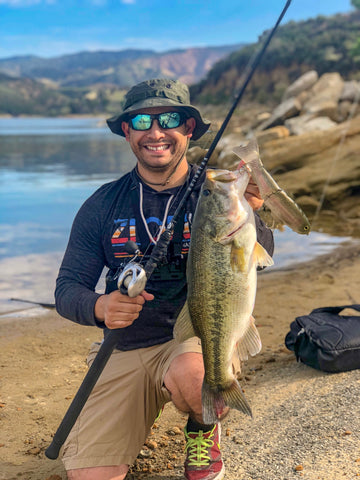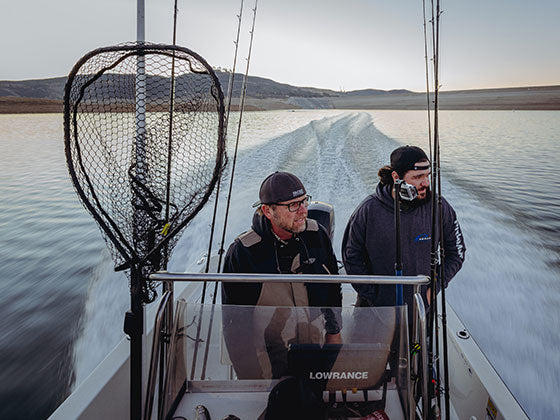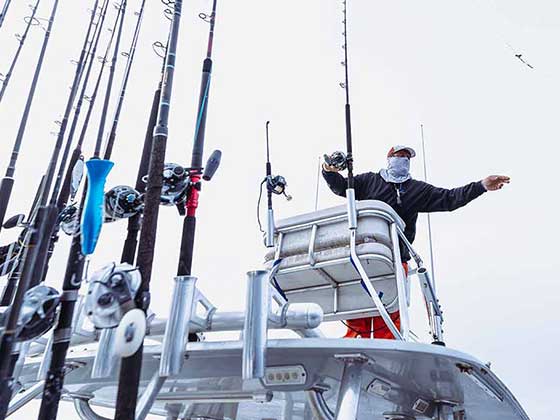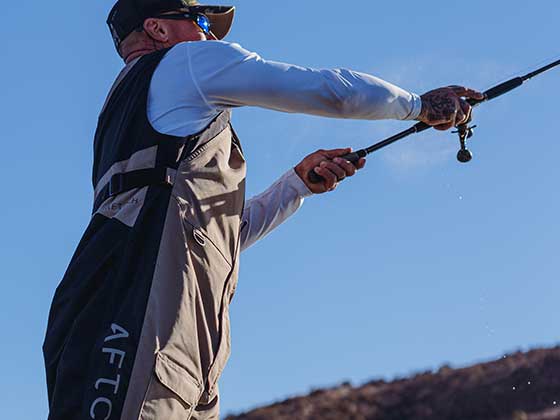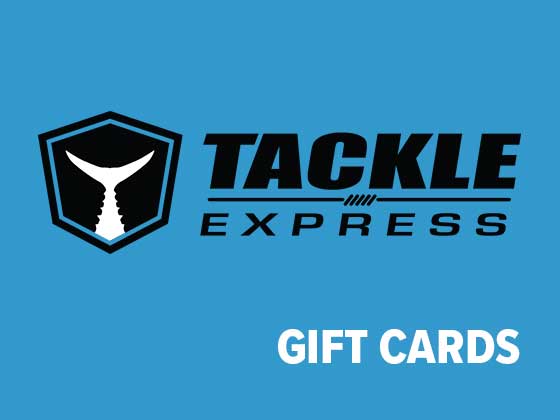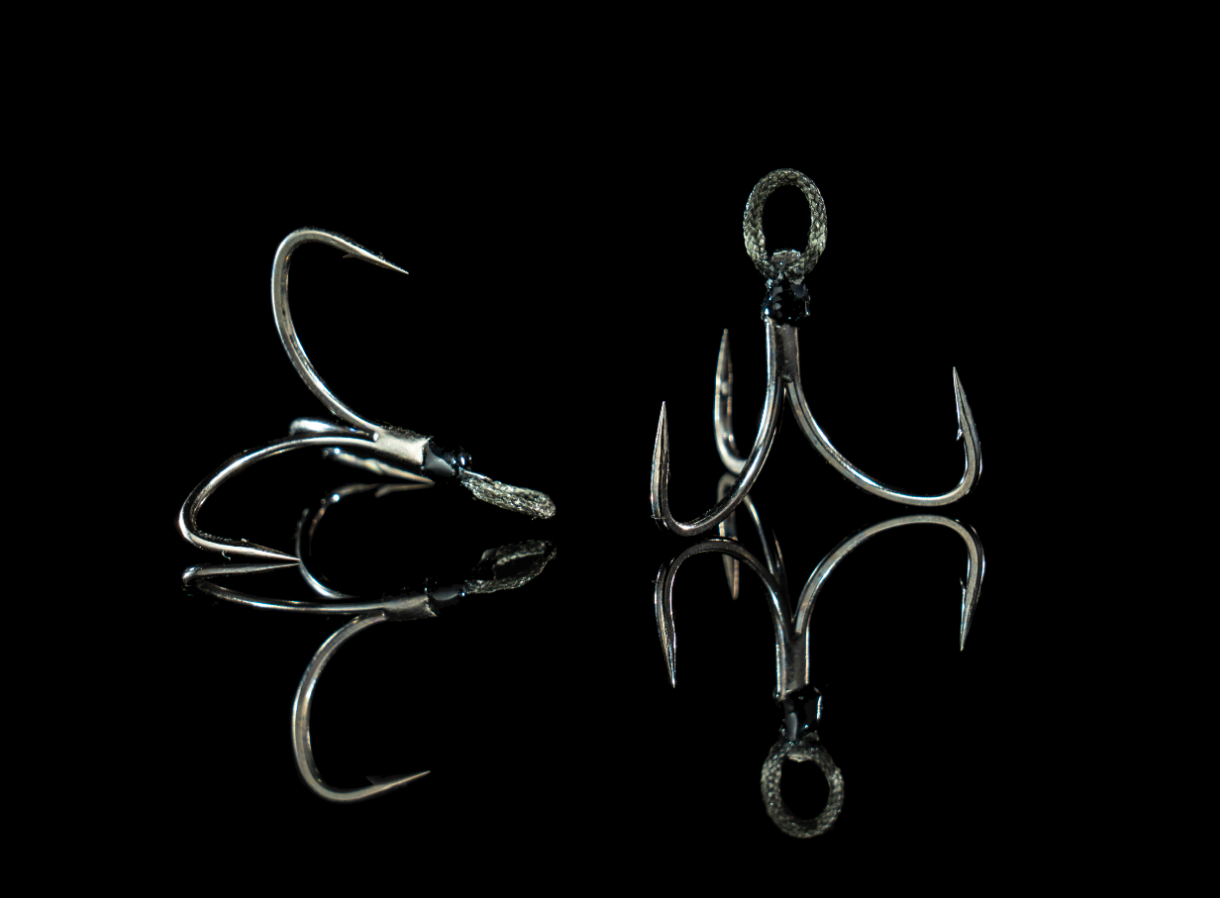Fishing larger swimbaits requires less tackle than you might think. Often times people are turned away from fishing bigger baits, the perception is that it’s expensive and you need a ton of gear. You can take swimbaiting to whatever level you want, spending a ton of money and getting the best gear, or get stuff that works but it’s not top of the line. This entry level setup will get you going and still leave money for gas to get to the lake.
1. Shimano Cardiff 400 and 401
- $129 suggested retail
- A-RB stainless steel ball bearings
- Metal frame with corrosion resistant coating
- Super Stopper anti reverse bearing
- VBS centrifugal breaking system which varies the control throughout the cast
- Round Reel
- 11 lbs of drag
- IPC 22
- Gear Ratio 5.2:1
- Weight 11.9 oz

This is a solid reel for swimbaits due to the wide spool, sufficient capacity, cast-ability, and inches-per-crank (IPC). IPC measures the inches of line that are returned to the reel for every 1 turn of the handle. The wide spool works well because after you cast the bait, the IPC aren’t changed as much as they would with a tall narrow reel. When the line comes off the spool the diameter is reduced when compared to spool when the spool was filled. This reduction in spool size changes the amount of line that comes into the reel as you turn the handle. This is especially important when fishing a bait that either needs to be brought in very slow or very fast.
If you want a reel that's newer and has more features, the Shimano Tranx (IPC 30) might be right for you. Shimano Tranx 300A ($279) or 400A ($299)

I prefer to look at IPC instead of gear ratio because IPC is more accurate. If you have a tall narrow spool with a slow ratio of say 4:1(for every 1 turn of the handle the spool turns 4 times) the IPC might be 22. On the flip side you could have a short wide spool that has 5.2:1 and have the same 22 IPC. Gear ratio can tell you a bit about the reel, but knowing the IPC will give you a true gauge of how fast your lure is coming back to you.
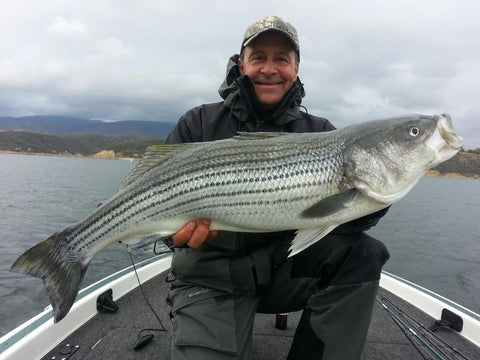
Ed with a healty striper in SoCal
Let’s say you are fishing a Huddleston Trout and creeping it very slow on the bottom. You need to maintain that slow pace throughout the retrieve in order to present the bait correctly. To exaggerate this a little, if you did a long cast on a narrow spool, you might have 1/2 of the IPC you had when the spool was full. When your spool was full you have 22 IPC, when you cast out half your line, you are now at say 11 IPC. So when dragging that Huddleston you would have to turn the handle twice as many times at the beginning of your retrieve than you would at the end.
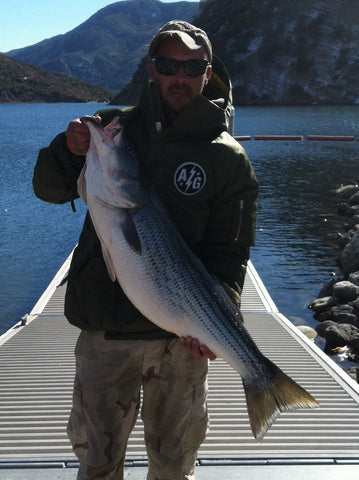
Dustin with a Huddleston fish at Pyramid Lake
The same thing is true when fishing a bait that needs a fast retrieve. Black Dog’s Lunker Punker is an 8” topwater bait that needs more IPC because each time you pull your rod tip to move the bait, you are bringing in a ton of line. The higher IPC with will take up that excess line faster, preferably in one turn of the handle, than a reel with less IPC. With a narrow spool and slower IPC, you won’t be able to work the Lunker Punker correctly.
2. The Rod: Dobyns Fury 806SB

I’d pair the Cardiff 400 and 401 (a “1” on the end of any shimano reel indicates it’s a left hand model) with a Dobyns Fury 806SB for $129 suggested retail. This rod is the best bang for your buck with a good bend, perfect lure weight range, and mid-grade guides and reel seat. It’s a 1 piece rod, rated 20-40lb mono or fluorocarbon line, and 2-8oz lure weight. This heavy fast action rod will throw medium size paddle tails, Huddleston 8” trouts, and larger topwater baits giving you the versatility you need when starting out.
Every rod and reel combination will cast differently. I suggest going to a park or large grassy area and practice casting before you get to the water. Use piece of cardboard cut into a fish shape, add some lead egg sinkers and wrap it up in duct tape for practice casting. This will mimic the way the wind changes your cast. Try to make it similar in size and weight to the bait you will be throwing.
By going to the park first, you’ll focus your attention on casting instead of catching something. With your focus on the rod and reel and how they perform, you’ll be able to cast further with fewer backlashes when you get to the lake. Make sure you check the cast controls on the reel, I suggest putting all the pins in the out position to start, then slowly push them in one at a time until you get it right.
The Lures:
This part can get a bit crazy, and I’m one of the crazies. I’ve spent way to much on swimbaits and like many, I’m addicted to it. I suggest you don’t follow in my footsteps and get crazy with it, the following lures are solid and will catch you fish if you put the time in. Swimbaiting is not a large numbers game, it’s looking for a few fish that are bigger which can be very rewarding, but it can also be very, very humbling.
a. Savage Gear swimbaits are well made, aren’t crazy expensive, and down right catch fish. For a shad style swimbait, I recommend the Savage 3D Shine Glide.
5.3” (13.5cm) $18.99
7.08” (18cm) $24.99
9” (22.8cm) $29.99.
The price and action push this glide style bait to the top of my list. The smaller one casts like a turd, but the other two cast just fine. The action of the bait is distinct and will produce strikes. Be careful not to fish it too fast, just a nice steady retrieve is all it needs.

Also check out the Savage Gear Glide Swimmer, it's a great trout style glide bait.
b. Osprey makes several baits, but the line-through ones are crazy good. They make them from 4 inches to 12 inches and they all swim killer. They aren't expensive ($14.99 to $59.99) and they are made right here in Southern California. The plastic is soft enough to get a great kick but they are durable enough to catch a few fish. The smaller ones are great for smallmouth, but also work on lots of other fish. The 10 inch and 12 inch are big pieces of plastic, but those bigger baits will draw more fish.
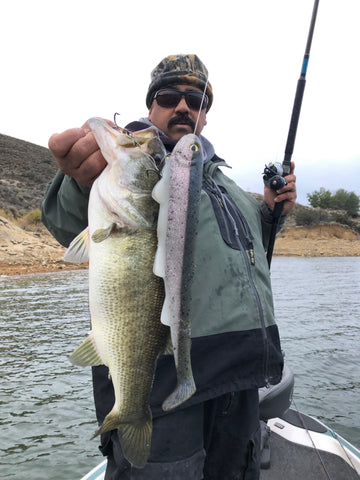
Vic with a nice largemouth on a 12" Osprey Line-Thru
A line-thru bait swims differently than a top hook. Top hook baits tend to be weighted in the nose or just under the head and are better for bottom dragging. Depending on your terrain, it's can be easy to snag a top hook on the bottom. Although a line-thru has a treble hook hanging from it, it's normally fished in the upper part of the water column or near, but not on, the bottom. It stays horizontal better and tends to create head bob and tail wag. This moves a ton of water and activates the lateral lines of big fish. Pitch it to the bank and start turning the handle right away. If you have grass or stickups, be careful since the treble hooks sticks out the bottom.
c. One of my favorites is the Spro BBZ-1 Trout ($22.99 to $54.99) due to it's versatility and effectiveness. Spro makes two sizes and 3 sink rates to suit your lake and conditions. I exclusively fish the floating and I tend to fish the 8 inch over the 6 inch bait. It's a really easy bait to fish but you can do so much with it.
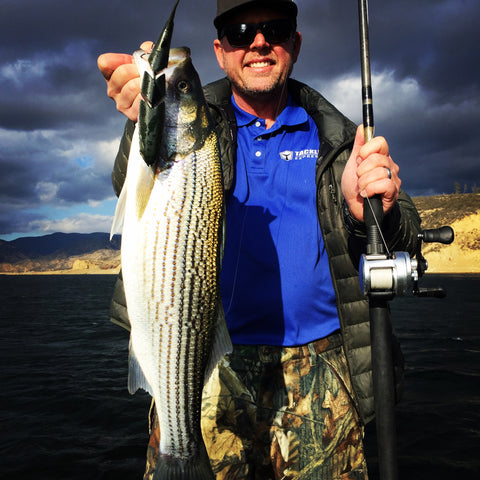
Chad with a striper using the Spro BBZ-1 floater.
If you slow roll it, I mean really really slow, it still has an outstanding action. It mimics a trout that's not scared, it's just kind of chilling on the surface. That's an easy target for a fish that may not want to expel much energy in the cold months of winter. In the spring I increase the speed of my retrieve with long burns with an abrupt stop. You can twitch the handle and make it dance around like it's feeding. Try speeding up the reel gradually and then stop it. It's really endless what you can do with this bait, play with it and see what works.
There are a gazillion more baits that swim excellent, but this is a good starting point. My suggestion is to learn how to cast them accurately, get a feeling for what the baits can do and can't do, and find spots that hold fish. You'll get a lot of followers, keep a mental note of where you were, the conditions, water clarity, wind directions, depth, etc..
The line you spool up with is a subject I'll cover another time. For anglers new to swimbaits, stick with monofilament line like Berkley Big Game. Match the size of the line to the size of the bait and the ratings on the rods. Smaller bait, lighter line and bigger bait, heavy line. A good gauge is 12-30lb line, I'll cover that in another article.
